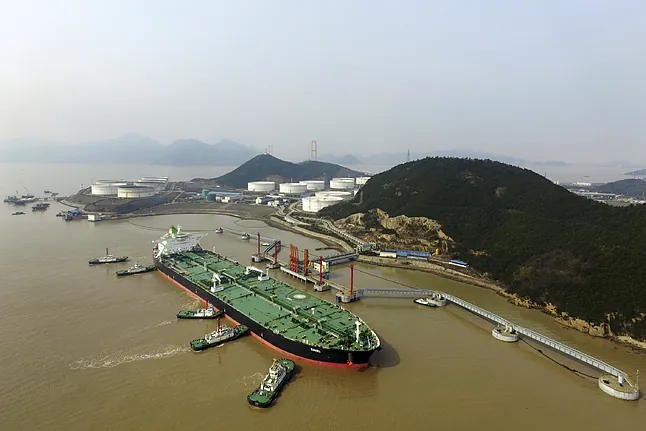A year ago, the Ceres I, a tanker from Iran but flying the flag of Sao Tome and Principe, collided with a Singaporean ship off the coast of Malaysia. The Iranian vessel sustained significant damage and could not continue its journey to its final destination, the port of Ningbo in eastern China. That same ship, which always transmitted from a false location, had transported large quantities of crude oil to China on several occasions. On the day of the ship collision off Malaysia, the location transmitted by the Iranian tanker indicated it was in the Indian Ocean, far from the incident point in the South China Sea.
Although Iran does not appear on the official lists of China's top oil suppliers, it is no secret that the energy-hungry Asian giant sources a significant amount of sanctioned crude oil from the Islamic Republic. This is made possible through what is known as the "ghost fleet" (also "shadow fleet" or "dark fleet"), ships that falsify cargo documentation, constantly change flags, manipulate satellite transponders, or transfer the merchandise to other vessels during the journey or at intermediate ports.
A few months ago, this newspaper witnessed two Iranian tankers flying the flag of Malaysia arriving at the port of Yantai in China's Shandong province, where small non-state-owned refineries receive oil from Iran or Russia, two countries under Western sanctions that sell their crude at significant discounts and seek covert ways to introduce it into the market.
As Chinese port workers explained, these ships often operate without transponders to avoid detection, and payments are made in Chinese currency to bypass the dollar-dominated financial system. According to commodity data company Kpler, over 90% of Iran's oil exports are currently destined for China.
Beijing, the world's largest oil importer (purchasing over 70% of its supplies from abroad), is deeply concerned about the conflict in the Middle East and the approved decision in Iran to close the Strait of Hormuz after the United States launched attacks on its nuclear facilities over the weekend.
The 33-kilometer-long Strait of Hormuz between the Persian Gulf and the Gulf of Oman handles approximately 20% of global oil and gas flows (around 20 million barrels of crude oil daily, according to the Energy Information Administration). It is estimated that in 2024, 84% of the crude oil and condensate, and 83% of the liquefied natural gas that passed through this waterway was destined for Asian markets, mainly China. The Asian giant, along with India, Japan, and South Korea, together accounted for 69% of all oil flows through the strait.
The United States is aware of the importance of Hormuz for China's energy security, urging Beijing on Sunday to use its influence over Tehran to prevent the closure of the commercial route. "I encourage the Chinese government to contact the Iranians, as they heavily rely on the Strait of Hormuz for oil supply," said U.S. Secretary of State, Marco Rubio, in an interview with Fox News.
"It would be economic suicide for Iran to close the strait," Rubio continued after reports emerged that the Iranian parliament had endorsed the blockade. A Goldman Sachs report suggests that oil prices could skyrocket above $100 per barrel if the strait is closed for an extended period.
China has been sustaining Iran's economy for years with oil purchases. "Over the years, Beijing and Tehran have developed an oil trading system that bypasses Western banks and shipping services. Russia adopted Iran's methods to export sanctioned oil after G-7 allies set the price of Russian crude at $60 per barrel in December 2022. As a result, Iran, Russia, and China have created an alternative market for sanctioned oil, where payments are made in Chinese currency and oil is often transported on ghost fleet tankers," explains Kimberly Donovan, an analyst at the American think tank Atlantic Council.
Economic ties between China and Iran began to strengthen after both countries signed the "Comprehensive Cooperation Plan" in 2021, under which Beijing sent many investors to Tehran (agreed to invest around $400 billion over a 25-year period) for ambitious infrastructure, energy, and telecommunications projects. In return, China received a regular supply of Iranian oil at significant discounts.
Just three weeks ago, a commercial railway corridor spanning 10,400 kilometers connecting the Chinese city of Xi'an with Aprin, near Tehran, commenced operations. This railway line reduces shipping time by sea from around 35 days to just 15. Cargo trains could expedite Iranian oil exports without the need to rely on the deceptive ghost fleet.
